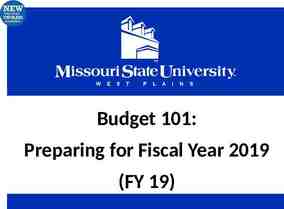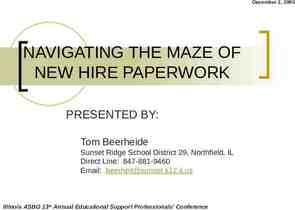Defining and Implementing a Talent Management Strategy for
37 Slides4.49 MB
Defining and Implementing a Talent Management Strategy for IT’s Changing Landscape Nadine Stern Deputy CIO, OIT Princeton University John Milnes Senior Director, Organizational Effectiveness Princeton University
In this presentation, we will cover: Background on Princeton University The changing IT landscape Princeton’s challenges Critical steps taken Talent Management (TM) – What is it? Our TM mission Foundation of our plan Our TM framework and 3-year business plan Identified risks and mitigation Next steps you may want to take
174 6 TH 4 OLDEST UNIVERSITY IN THE . . US STUDENTS FOUNDED 7,981 PRINCETON BY THE NUMBERS 5,277 UNDERGRADUATES 6,600 2,704 EMPLOYEES GRADUATES UG STUDENT TO FACULTY RATIO 5:1 Nobel Laureates Pulitzer Prize Winners MacArthur Fellows National Medal of Science Recipients
OIT BY THE NUMBERS 30 Central IT 5 Staff 60 8 Departments MANAGERSResearch Computing Information Security Office Academic Technology Services Administrative Information Services Support Services Enterprise Infrastructure Services Project & Technology Consulting Services Operations and Planning Distributed IT Staff 21
The Changing IT Landscape
Technical Trends Bring your own device Cloud/SAAS, IAAS, PAAS Mobility Security/cyber threat Big data, location agnostic, secured Data mobility Reduction in “control” over IT environment consumerization, remote workforce Expectations for usability Ubiquitous wireless
Workforce Trends Remote access Changing demographics Retirements and succession planning “Digital Natives” – how in touch are we? Changing skill sets (e.g. brokers) Work/life balance in a constantly connected environment 24 x 7
Trends in Higher Ed 24 x 7 / business continuity Research as an engine for economic development Entrepreneurism Measuring student success Risk management “Flipped” classroom Digital preservation Preservation of electronic records (text messages, faculty lectures) Consortia-based buying
Our Challenges Organizational Effectiveness Ope on erra attiio all HR na F an Fiin na ncce e Mana g e m ag ent Organizat iona atio nall Commu ni uniccations Talent Management Ca m pu am uss IT Tr a in Tra ing F acilitie Fa ties Management
Critical Steps Taken Developed Talent Management business plan Formed Talent Management Ivy group Used outside sources (i.e., Deloitte’s Talent Management model) Inventory of work; context within Talent Management framework Organizational Development consultant Talent Management certification program Timing
Talent Management – What is it? Putting the right people with the right skills in the right roles in order to achieve business objectives. “Talent management may be defined as the implementation of integrated strategies or systems designed to improve processes for recruiting, developing and retaining people with the required skills and aptitude to meet current and future organizational needs." Taleo's website (www.taleo.com)
Our Talent Management Mission Realizing our people are our most important resource in supporting the goals of OIT, our mission is to: manage a talent portfolio that provides the right mix of people to perform the work of OIT as it changes recruit the best talent (find the right people, team players, diversity ) elicit the best performance recognize and reward outstanding performance and outcomes provide opportunity for professional development
The foundation for our plan Change workshops around OIT 3.0 (staff, management, CIO-SS) A need for a more formalized, cohesive framework Collaboration with central HR Ivy Peer benchmarking and conversations Ivy Plus Talent Management group OIT long range planning and recognition that Talent Management is critical to the success of OIT 3.0 Industry and higher-education Institute for Organization Development Talent Management Certification Workshop with Organizational Development and Leadership consultant
Our Talent Management Framework Core and Technical Competency Identification Bench Strength Assessment Pay for Performance Retention/Attrition Assessment Talent Assessment and Planning Growth Opportunities OIT Awards Succession Planning Job Profiles/ Classifications University Awards Rewards and Recognition OIT 3.0 Talent Acquisition/ Sourcing Recruiting Talent Mobility/ Promotion Hiring Orientation/ Onboarding Leadership Development Management Development Technical Skill Development Core Competencies Development Learning and Development Performance Management Performance Assessment Performance Coaching Professional Development and Career Planning Reclassification
Survey Questions 100 Things You Need to Know: Best People Practices for Managers and HR Eichinger, Robert; Lombardo, Michael; Ulrich, Dave; Minneapolis, MN: Lominger International: A Korn/Ferry Company; 2011
1 How early can potential be identified after a person is hired? http://tinyurl.com/jmilnes1
C After two bosses have watched them in two different jobs. Being a high potential involves a combination of having foundational characteristics of achievers plus the ability and willingness to learn from life and job experiences. Learning from experience is highly related to later success because later success depends on different competencies and skills than current success.
C People who stay in the same job are less successful over time because times and jobs change.
Talent Assessment and Planning Provide our leaders with the information needed to assure an effective talent management strategy. What we currently do: Job description repository CIO Senior Staff level planning Vacancy opportunities assessment Year 1 Year 2 Year 3 Retention/attrition analysis OIT climate survey Identify high potentials and high/low performers Compensation Pilot Identify technical competencies essential for current and future roles Update job descriptions to identify essential skills Succession Planning and bench strength assessment Market analysis
2 Do people differ in how much they learn from experience? http://tinyurl.com/jmilnes2
C There are marked differences in how much people learn from experience. - When recruiting, grade point average isn’t a good predictor of how well they will learn new behavior over time. - Learning new behavior/skills is tougher than factual or technical learning; fewer people do this well. - If you hire people who learn well from experience, they must have the right experience.
C - Measuring how well they learn from experience is one of the most important for predicting future performance and potential.
Talent Acquisition and Sourcing Ensure we attract and hire the right people, provide an engaging/welcoming onboarding process, and create opportunities for talent mobility and promotions. What we currently do: Orientation/Onboarding program New employee orientation and tour Buddy Program Referral Program
3 Which is most true about managers/supervisors in delivering constructive feedback to direct reports? http://tinyurl.com/jmilnes3
A Most managers/supervisors find it hard and uncomfortable - Face-to-face feedback can improve by focusing on agreed-upon competencies needed to reach work goals. - Low performers consistently overrate themselves, so having them track their own performance helps them gain a more accurate view of their contribution.
A - Feedback intervention must be accompanied with goal setting. Tied to a goal or purpose, feedback helps people improve.
Performance Management Provide timely and accurate feedback to ensure that OIT staff fully understand the performance standards expected for their roles and to provide a framework to drive performance so that standards can be met and exceeded. What we currently do: Annual performance review Performance Improvement and Coaching Plans Management Coaching Reclassification process Year 1 Year 2 Year 3 Revise Annual Performance Reviews (APRs) Train managers and staff to do quality performance reviews Improve APRs per feedback Map competencies and performance factors to APR Establish a schedule for reclassifications Explore options for smaller, abbreviated reviews Change culture on giving and receiving feedback
4 What is the best developmental path for high potentials to follow? http://tinyurl.com/jmilnes4
C Go through a set of experiences that are challenging and require new and different skills - Studies across 50 years support the predictive power of some combination of key traits and personal histories. - Without challenging leadership experiences, talented young managers might atrophy or not mature as leaders.
C - New, different, challenging and unique opportunities that match skills needed now and in the future is the best program to follow.
Learning and Development Recognize staff as our greatest resource and provide a culture of continuous learning through professional training and work assignments that enable our staff to grow, develop and excel. What we currently do: HR Coaching Program HR Management Program HR Learning Curriculum Conferences Core competencies identified Performance development training Vendor-supported technical training Lynda.com Year 1 Year 2 Year 3 Core competencies gap analysis Create structured discussions for professional development and career planning Evaluate additional feedback mechanisms such as 360 feedback Establish curriculum and begin rolling out a program to develop core competencies in managers/staff/non-central IT staff ( ) Enhance managers’ coaching and mentoring abilities MOR National Leaders Program ( ) Enhance management development opportunities Expand use of HR Executive Coaching ( )
5 What motivates people to work? http://tinyurl.com/jmilnes5a
E Quality of jobs and tasks and quality of an organization Top motivators are usually job challenge, opportunities to use skills and progress (pay and benefits are not top motivators). Quality of supervision is important. Top motivating factors: (1) accomplishing something worthwhile, (2) autonomy, and (3) chances to learn new things.
Rewards and Recognition The goal of these activities is to creatively reward and recognize staff for their outstanding performance, contributions to OIT 3.0, as well as their mastery of OIT’s core competencies. What we currently do: Pay for performance President’s and Griffin Awards CIO Award Community building activities On the Spot awards Special Performance Recognition Awards Year 1 Year 2 OIT Tiger of the Week Implement Tiger, Stripe and OnThe-Spot awards Better recognition of staff promotions Better recognition/communication around project successes Reward and publicly recognize departmental stretch goals Year 3 Develop more "cool" (but low cost) recognition programs ( )
Risks to success Risks Mitigation Adoption Lack of buy in by managers and staff Funding Obtain contributions from departmental budgets Dedicate a portion of central funds to support programs Lack of available funds to support organizationwide program costs Clear communication Top-down support from OIT Senior Staff Accountability at the management level Conduct successful training that generates interest in more training and justifies time and financial investment Competing organizational priorities and required time to ‘sharpen the saw’ Work with OIT leadership to adopt Talent Management as a priority and consider TM activities in resource planning. Program should be nimble enough to adjust schedule to changing priorities Team bandwidth Reprioritize Use consultants to augment staff OIT staff bandwidth Organizational Effectiveness team has numerous competing priorities
Possible Next Steps What next steps might you take with your organization?
Help Us Improve and Grow Thank you for participating in today’s session. We’re very interested in your feedback. Please take a minute to fill out the session evaluation found within the conference mobile app, or the online agenda.










































